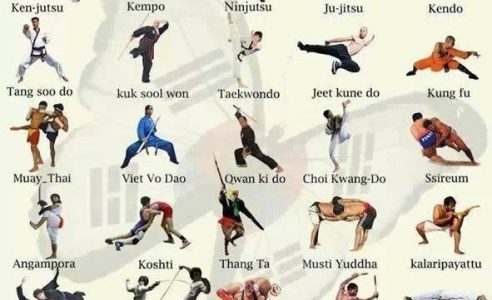The History And Approach Of Martial Arts: A Deep Dive
The History And Approach Of Martial Arts: A Deep Dive
Blog Article
Authored By-Ingram Francis
Enter the old globe where martial arts were substantiated of necessity in varied areas. Societies crafted distinct combating designs linked with historic contexts. Techniques developed over centuries via committed practice and cultural exchanges. Today, contemporary martial arts mix traditional elements for maximum performance. Philosophically, martial arts stress self-control, self-improvement, and consistency. Respect, humility, and balance are foundational principles guiding experts in the direction of growth and durability. Discover the depths of this rich history and philosophy to discover the extensive impacts forming this long-lasting self-control.
Beginnings of Fighting Style
Fighting style originated in various regions all over the world, progressing as sensible combat systems to prevent hazards. These old battling styles were established out of requirement, with each culture crafting techniques suited to their unique environments and difficulties. From the grappling arts of Jujutsu in Japan to the striking strategies of Martial art in China, martial arts were deeply intertwined with the historic, social, and cultural textile of their particular cultures.
In Japan, the samurai course polished martial arts like Kenjutsu, the art of the sword, which later on developed right into the extra promoted type of Kendo. At the same time, in Brazil, Capoeira became a blend of dance and combat, produced by enslaved Africans as a way to stand up to injustice. what is martial arts all about brings with it a rich history and viewpoint, mirroring the values and ideas of the people that exercised them.
As you explore the beginnings of martial arts, you discover a tapestry of human ingenuity, durability, and the unrelenting spirit of warriors throughout time.
Development of Techniques
Via centuries of method and improvement, fight strategies within numerous martial arts have actually gone through an extensive development. From ancient styles like Kung Fu and Karate to a lot more modern self-controls such as Brazilian Jiu-Jitsu and Krav Maga, the development of strategies has been driven by a mix of cultural impacts, functional applications, and technological innovations.
One considerable aspect of this advancement is the cross-pollination of strategies between different martial arts. As an example, strategies from traditional Japanese Jiu-Jitsu were included into the development of Judo by Jigoro Kano in the late 19th century. https://turnto10.com/features/health-landing-page/health-check-kids/taekwondo-physical-education-robertson-elementary-school-first-grade-students-motor-skills-literacy-classes-june-15-2023 blending of styles has resulted in the development of hybrid martial arts like Mixed Martial Arts (MIXED MARTIAL ARTS), which integrate elements of striking, grappling, and submission strategies.
Moreover, the development of strategies has actually been formed by the increasing focus on performance and efficiency in combat. Specialists have actually continually looked for to fine-tune their strategies through extensive training, testing, and competition, resulting in the development of extremely specialized and reliable battling styles. On the whole, the evolution of strategies in martial arts mirrors the vibrant nature of fight and the recurring mission for enhancement and technology.
Philosophical Structures
Checking out the underlying philosophical concepts of martial arts supplies understanding right into their core values and directing ideas. At the heart of lots of martial arts disciplines is the concept of discipline itself. By educating your body and mind to work as one cohesive unit, you grow technique that prolongs past the dojo or gym right into daily life. This discipline incorporates regard, humbleness, and self-control, forming not just your physical capabilities yet additionally your character.
One more basic thoughtful foundation in martial arts is the concept of continual self-improvement. The trip of understanding a martial art is never-ending, with practitioners constantly aiming to better themselves, both literally and psychologically. This focus on development cultivates resilience, determination, and a growth state of mind that can be put on all facets of life.
In addition, martial arts highlight the importance of consistency and equilibrium. Techniques are made to make use of an opponent's power against them, highlighting the concept of generating and rerouting pressure instead of satisfying it head-on. This philosophy extends to social relationships, advertising relaxed resolutions and good understanding. By embracing these thoughtful structures, martial artists not only improve their battle abilities but likewise grow a way of life centered on personal development, regard, and harmony.
Verdict
To conclude, the history and viewpoint of martial arts offer an abundant tapestry of custom, technique, and self-improvement.
Take for example the story of Bruce Lee, who revolutionized martial arts by blending various styles and viewpoints to produce his own special kind of Jeet Kune Do.
Via commitment and development, martial artists remain to press borders and influence others to reach their complete possibility both in fight and in life.
